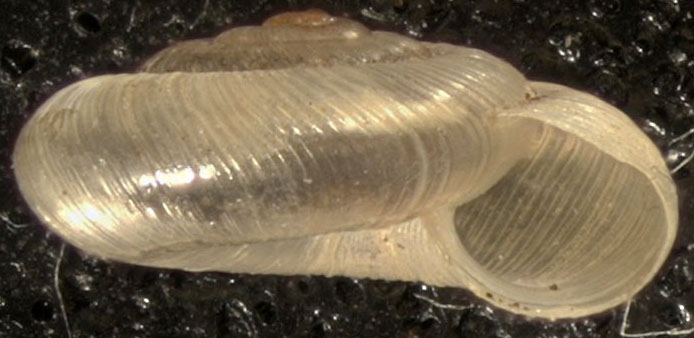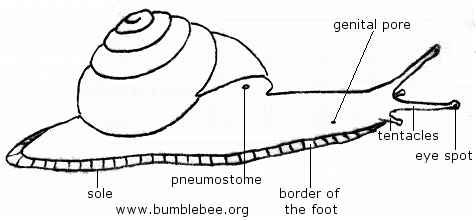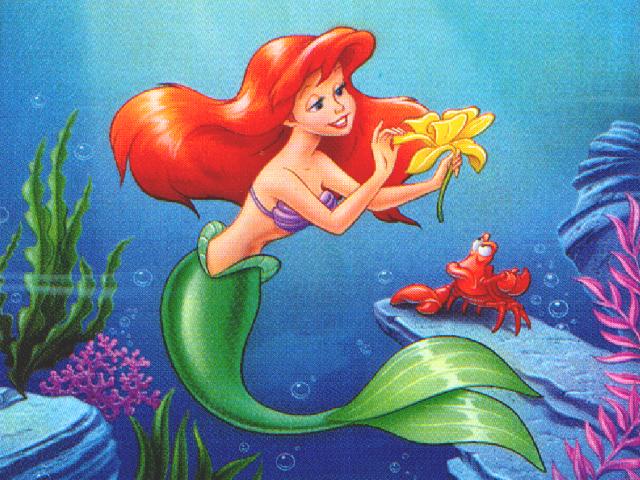
Adaptation
“What would I give if I
could live out of these waters?”
As evolution transitioned water-dwelling snails to a
life on land, these creatures developed several adaptations to survive
in a drier habitat.
Terrestrial snails like
Zonitoides limatulus have several features that allow them to enjoy
a life above the sea. (The little mermaid would be envious of this.
But unlike Ariel, Z.
limatulus has no
intention of returning to underwater living.)
First of all, the tough calcium carbonate-based shell of a land
snail helps to protect it against dryness and predation
(Nordseick, 2011).
Most of the snail's internal organs are
contained within its shell, with only necessary organs located
externally, such as the foot, mouth, and breathing and sensory organs
(Hickman et al., 2009). A
snail's mucus-like slime is also a very helpful defense against evaporation, and
also helps with locomotion. An
interesting feature of snail slime is that it is hygroscopic,
meaning that it attracts water molecules to it rather than releasing
moisture
(Nordseick, 2011).
A snail’s behavior is also an aid to its survival; if its surroundings
are too dry, it will seek to find shelter somewhere more suitable.
“What would I pay to spend a day warm on the sand?"
Terrestrial snails no longer have a use for a comb
gill, or ctenidium
(Nordseick, 2011).
Instead, they have adapted a mantle, complete with lungs, for the ability to obtain oxygen from the air(Nordseick,
2011).
This, however, poses the problem of losing internal moisture
through exhalation.
Evolution has helped them to adapt to this with the development of a pneumostome,
which is a respiratory pore
(Hickman et al., 2009).
Land snails have the ability to open and close this hole with a
ring of muscle, and can control the flow of air into the mantle cavity.
The lining of the mantle is composed of a thicker tissue to help avoid
drying out
(Nordseick,
2011).
for the ability to obtain oxygen from the air(Nordseick,
2011).
This, however, poses the problem of losing internal moisture
through exhalation.
Evolution has helped them to adapt to this with the development of a pneumostome,
which is a respiratory pore
(Hickman et al., 2009).
Land snails have the ability to open and close this hole with a
ring of muscle, and can control the flow of air into the mantle cavity.
The lining of the mantle is composed of a thicker tissue to help avoid
drying out
(Nordseick,
2011).
I would try to explain to you the evolutionary science behind the mermaid
Ariel’s marine to terrestrial transition, but that’s a website for a
different day.
It is interesting, though, that the scallop shells
that Ariel dons on her bosom are also of the phylum Mollusca,
belonging to the class Bivalvia.
Her friend Sebastian, also pictured below, is a crustacean of the
phylum Arthropoda
Questions? Want to meet the author?
L
